<< Previous | Displaying results 2511-2520 of 2604 for "" | Next >>
-
Portrait of Helen Keller
PhotoPortrait of Helen Keller, seated, reading Braille. September 1907. In 1933, Nazi students at more than 30 German universities pillaged libraries in search of books they considered to be "un-German." Among the literary and political writings they threw into the flames during the book burning were the works of Helen Keller.
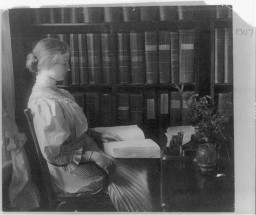
-
S-21 (Tuol Sleng) Prison, Cambodia
PhotoThe most notorious of the 189 known interrogation centers in Cambodia was S-21, housed in a former school and now called Tuol Sleng for the hill on which it stands. Between 14,000 and 17,000 prisoners were detained there, often in primitive brick cells built in former classrooms. Only 12 prisoners are believed to have survived.
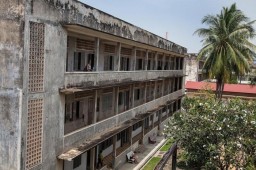
-
Frances Perkins
PhotoSecretary of Labor Frances Perkins testifies before the House Committee on migrant workers. Washington D.C., December 1940.

-
Lois Gunden and staff of the Ville St. Christophe refugee children’s home
PhotoLois Gunden (center right) with other members of the Ville St. Christophe staff in Canet-Plage, France. At the age of 26, Lois Gunden, a Mennonite and French teacher from Goshen, Indiana, sailed to Europe to head the Ville St. Christophe refugee children’s home in Canet-Plage, France. She had not been involved with overseas relief work before, and had never been to Europe. But she spoke French, and the Mennonite Central Committee needed someone willing to place herself in danger to help others.…
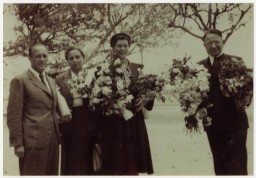
-
Instructions posted during Japanese American relocation
PhotoA notice posted on a wall in San Francisco, California, lists “evacuation” instructions for the area’s Japanese American residents, 1942. They were deported, first to temporary “assembly centers,” and from there to relocation centers in remote areas of the United States.
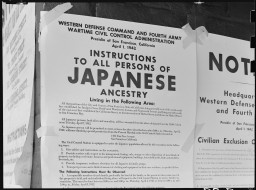
-
Army Military Police guard the Manzanar Relocation Center
PhotoArmy Military Police guarding the boundaries of the Manzanar Relocation Center in California, one of ten relocation camps where American residents of Japanese ancestry were forcibly deported, April 2, 1942.
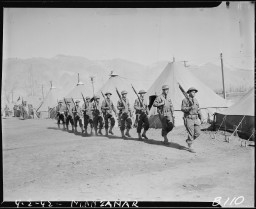
-
Town hall meeting at the Manzanar Relocation Center
PhotoJapanese Americans hold a town hall meeting at the Manzanar Relocation Center in California, 1943.
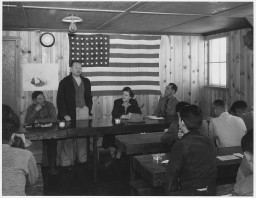
-
Nursery school children at the Heart Mountain Relocation Center
PhotoA group of nursery school children at the Heart Mountain Relocation Center in Wyoming, January 4, 1943. The Heart Mountain Relocation Center was one of ten relocation centers where Japanese Americans were forcibly deported.
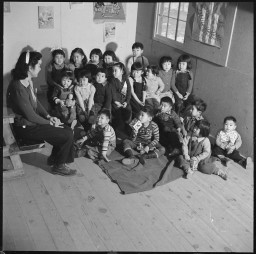
-
Painting entitled “Gassed,” By John Singer Sargent, 1919
PhotoWorld War I (1914–18) saw the first use of poison gas as a weapon of war. In this oil painting, John Singer Sargent depicted the aftermath of a mustard gas attack on British soldiers during a battle in August 1918. A line of soldiers, with bandaged eyes injured by the gas, hold on to one another as they are led to medical treatment. Around them are rows of other soldiers injured by the effects of the mustard gas, which could cause injuries such as burns and temporary blindness. © IWM (Art.IWM ART…

-
Scene of destruction during World War I
PhotoScene of destruction during World War I: panoramic view of the battlefield at Guillemont, September 1916, during the Battle of the Somme. © IWM (Q 1281)

